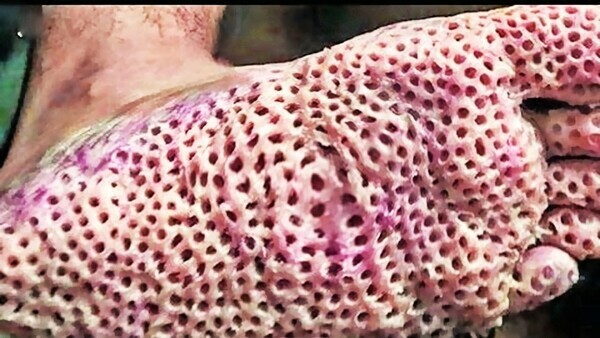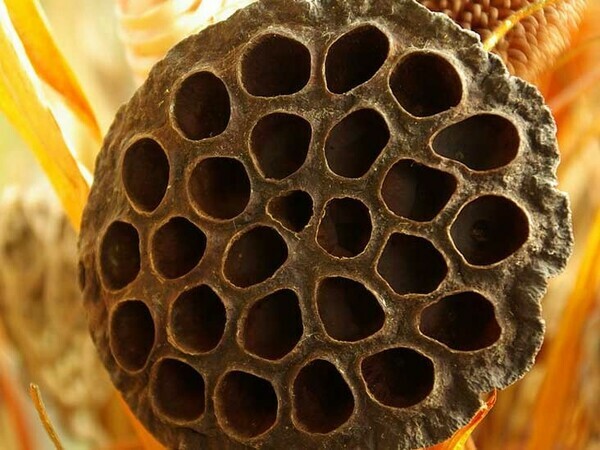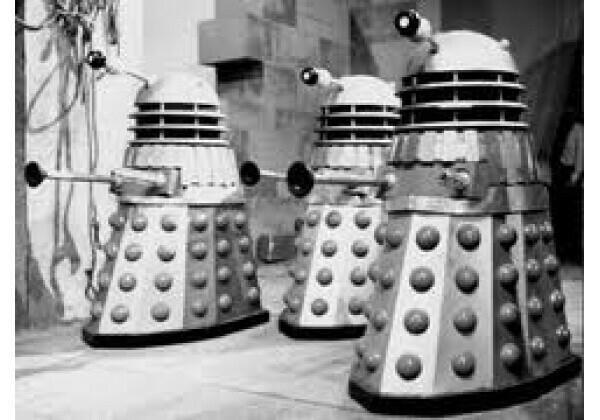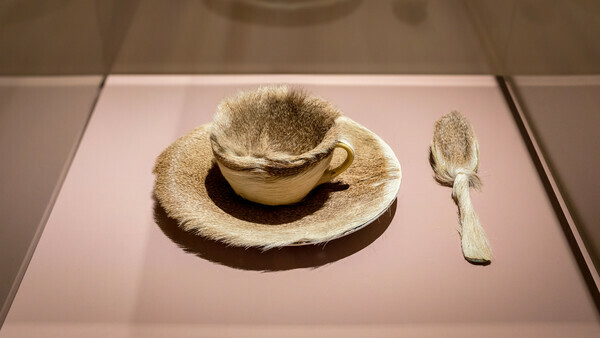BLOG/WRITING
Extra Texture
This post is another installment in a short series on the elements of art, taken from some of my classroom instruction, in which I would try and show how the elements of art exhibit the power to provoke emotional responses. The elements of art might often be deployed subtly and with nuance but I wanted to provoke strong trigger responses to visual cues, much like the oral Voight-Kampff test as used in the movie Bladerunner. In the movie test a flat or indifferent response to what are usually emotionally provocative situations for humans indicates that the subject isn't human but rather a replicant. In class I simply wanted to show how how emotionally humans/students might respond to elements of art. Texture was quite straightforward with projections like this:

Showing the slide above, not surprisingly, always provoked a response ranging from mere disgust, to repulsion and, occasionally, genuine fear. For people who have trypophobia, a fear of multiple holes or bumps, this image triggers a most extreme response.
Trypophobia has only recently been recognized as a phobia, and there are questions as to how real and how manufactured it is. It seems to be a phobia that has a cult following largely from fans of the horror genre, which is interesting in it's own sense, because there are social media groups, members of whom are allegedly trypophobic, who deliberately gross themselves out. There is an aesthetic around the discomfort precipitated by the aversion, in the same way there is an aesthetic to gore in horror movies. In a way, these kinds of cultishness might be similar to the cult of inflicting and being inflicted with pain, as in sadomasochism. I find tryphobia an interesting manifestation of an element of art in that it has a strong sensual aesthetic following that actually shares of artfully created disturbing imagery.
Those who express tryphobic disgust/repulsion/fear are likely to have discomfort looking at strawberries or honey comb or wasp's nests or coral.

Apparently it's hard to know what 'causes' a strong trypophic response in people. It might be a evolutionary based fear of the contents of the holes which might contain pathogenic or pain inflicting organisms, they might suggest disease or bites, or it might just be something to do with the frequency and size of the holes. If evolutionary, many fear and startle responses might be useful for survival under certain circumstances; fear of heights, fear of snakes, fear of shadows in the dark. Why not fear of holes? Regardless of why we respond as we do to the texture of many holes, I thoroughly enjoyed attempting to make the case that yet another element of art can provoke a strong visceral response.
Bumps are apparently part of the trypophobic spectrum and although I'm not so much repulsed as intrigued by holes or bumps (unlike heights and confinement) like most people I definitely respond to them. As a child I found Daleks disturbing and mesmerizing for a number of reasons, but one was the alarming regular arrangements of convex semii-orbs on their lower exterior cladding.

Of course, not all texture has to be a panic inducing aversion trigger, but it can provide a profound sensual element to be deployed in visual art, both fine and applied, and it would not take long for anyone to find stimulating examples that are attractive or repulsive in the art or film making they enjoy. Think of how artists often go to great lengths to elaborately render hair, feathers or wood grains in their art.

Meret Oppenheim's Object, 1936